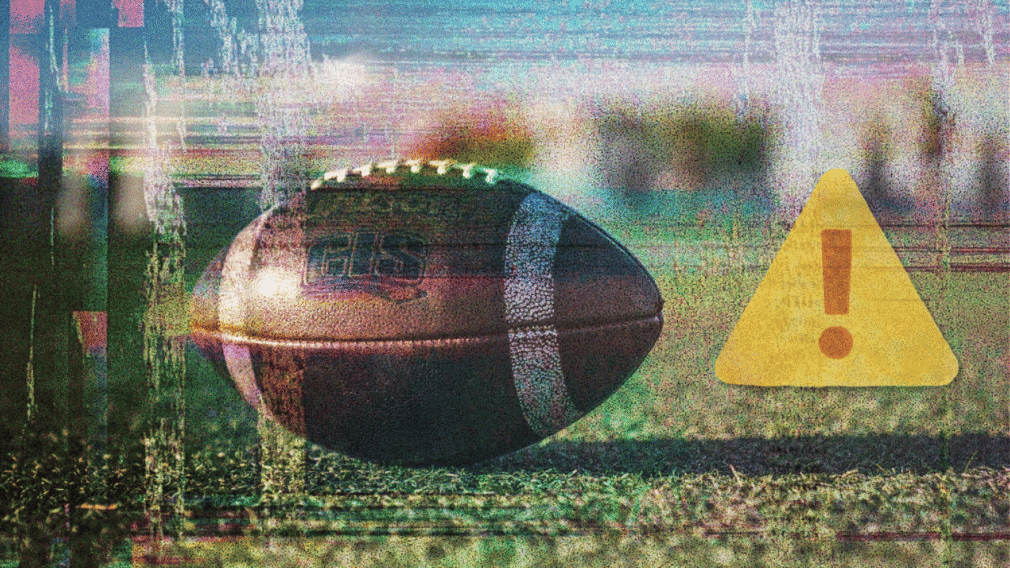Common Mistakes in NFL Football Betting and How to Avoid Them
The accessibility of NFL betting makes it easy to get in the game, but successful wagering requires discipline to avoid common, costly mistakes. The majority of errors stem from psychological biases and poor financial discipline, leading bettors to ignore the value-based strategies necessary to beat the sportsbook’s built-in advantage (the vig).

The single most damaging mistake is chasing losses, a behavior that typically affects over 50% of bettors during cold streaks and quickly escalates financial risk. Avoiding this and other common pitfalls is the fastest route to improving your long-term results.
1. The Financial and Emotional Traps
These errors relate directly to a lack of planning and self-control.
Mistake: Chasing Losses
What It Is: Increasing your bet size immediately after a loss in a desperate attempt to recover funds. This is a highly emotional response driven by frustration and the sunk cost fallacy.
The Cost: This strategy ignores proper analysis and compounds financial harm. Chasing losses is a major indicator of problem gambling. 
How to Avoid:
Set a Loss Limit: Define a maximum amount you can lose daily or weekly. Stop betting entirely when you hit that limit.
- Take a Break: Use app tools for a session timeout after any significant loss. Clear your mind before placing the next wager.
Mistake: Poor Bankroll Management
What It Is: Betting too much money on a single game or not clearly separating betting funds from your essential living expenses.
The Cost: Betting too high a percentage of your bankroll on one play exposes you to “ruin” during inevitable losing streaks.
How to Avoid:
- Use Units: Never risk more than 1% to 3% of your total bankroll on any single bet. (e.g., A bankroll means a maximum bet).
- Flat Betting: Stick to betting the same small amount (one unit) on every game, regardless of how confident you feel.
Mistake: Over-Reliance on Parlays
What It Is: Combining two or more bets into a parlay to chase massive payouts. While tempting, parlays multiply the house edge with each leg added.
The Cost: Parlays are the house’s largest profit generator. Mathematically, the odds offered are usually worse than the true probability of all events winning, making them negative Expected Value (-EV).
How to Avoid:
- Limit Parlays: Use parlays sparingly and only for small-stake entertainment.
- Focus on Singles: Build your core strategy around straight bets (Spread, Moneyline, Totals), which offer a lower house edge.
2. The Research and Data Mistakes
These errors stem from flawed analysis and a lack of objectivity.
Mistake: Betting with Emotion or Bias
What It Is: Allowing personal feelings, team loyalty, or overconfidence to influence wagers. This includes betting a large amount after a recent win, which creates an “illusion of control.”
The Cost: Emotional bets severely reduce objectivity, and data shows wagers placed on favored teams often underperform by 5% to 10% ATS.
How to Avoid:
- Stay Objective: Base every bet on data, not on which team you like. Avoid betting on your favorite team if you find it difficult to stay neutral.
- Review Full History: Consistently track your wins and losses to maintain a realistic perspective on your true winning percentage.

Mistake: Overreacting to Recent Performance (Recency Bias)
What It Is: Placing undue emphasis on a team’s last game or short winning/losing streak, while ignoring long-term trends and season-wide data.
The Cost: You buy into inflated lines when a team is hot and miss value when a quality team is undervalued after a fluke loss. Teams eventually regress to the mean.
How to Avoid: Evaluate teams using a season-long perspective. Use advanced metrics like DVOA or EPA to gauge true team efficiency, which provides a clearer picture than a box score from last Sunday.
Mistake: Ignoring Line Movements and Odds Shopping
What It Is: Placing a bet at the first odds you see without checking other sportsbooks for a better price or failing to note why a line is moving.
The Cost: Not shopping for the best price loses you 1% to 2% of your potential long-term return. Getting a line at -3.5 instead of -3 is often the difference between a loss and a push.
How to Avoid:
- Open Multiple Accounts: Maintain accounts at several legal sportsbooks (e.g., FanDuel, DraftKings, BetMGM) to compare odds instantly.
- Monitor Splits: Pay attention to reverse line movement, where the betting line moves in the opposite direction of the public money. This often signals that “sharp money” (professional bettors) is taking a contrary position, creating a value opportunity.
Quick-Start Checklist for Avoiding Mistakes
- Set Limits: Define your bankroll and stick to 1-3% unit sizing.
- No Chasing: Never increase your bet size after a loss.
- Shop Lines: Always compare odds across multiple apps.
- Research: Use advanced metrics (DVOA/EPA), injuries, and weather as primary research points.
- Be Selective: Limit your wagers to 3–5 games per week where you see a clear statistical advantage.
If you struggle with controlling your betting, call the National Problem Gambling Helpline: 1-800-GAMBLER.
Recommended
